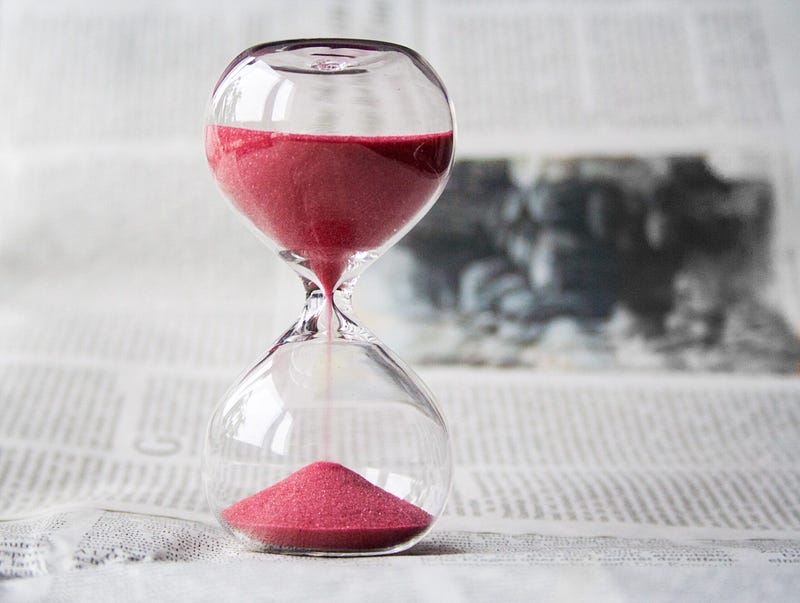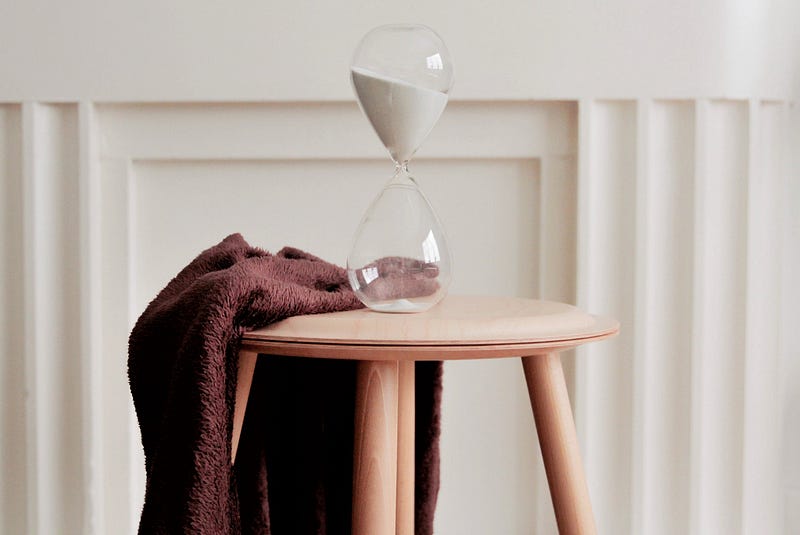This 110 year-old book taught me more in 90 pages than many of the newest big books on the market

Photo by Clem Onojeghuo on Unsplash
I love stumbling upon a hidden gem of a book. One that I’ve never heard of, but someone well-respected speaks highly of it.
I was listening to an interview with the great Brian Tracy, when I heard him mention a book in passing as one of his all-time favorites on productivity. It was called How To Live on 24 Hours A Day by Arnold Bennett. I had never heard of it. But if the mind behind Eat That Frog! says a book on productivity is his favorite, you’ve got to check it out!
As a bonus, it was only about 90 pages long. As if that weren’t enough, it’s in the public domain. You can get a copy in various formats courtesy of Project Gutenberg.
It’s a rare thing to find a book that is equal parts deep philosophical examination of life and practical guide to time management. But this book is just that. Some of Bennett’s examples are dated (since the book was written in 1910), but the points he makes, and his observations about what we as working people face, are timeless.

Arnold Bennett c/o Wikimedia Commons
Bennett wasn’t primarily an entrepreneur or a productivity writer, but he was prolific. He wrote 34 novels, 13 plays, wrote and edited hundreds of newspapers and periodicals, as well as writing for the early film industry and briefly running the Ministry of Information in the UK.
And his insights into personal productivity and time management are as actionable as they are elegantly stated. Specifically, there are 4 things from Bennet’s book that are extremely useful to understand for those of us trying to be more productive.
I lay them out here, partly for you readers, but also partly for myself, since it’s advice I still need to follow more in my own daily life.
Don’t Underestimate the Big Effects of Small Things
At the end of his introduction to the book, Bennett essentially introduces the idea of the lifehack, a hundred years before its modern incarnation. You know, those little things you can do to make it easier to do more difficult and valuable things? For him, it was the suggestion of getting an earlier start, in order to get more done.
He anticipates the objections of those who want to have breakfast and caffeine before getting started on work. So he introduces a hack. Prepare a tray that night for the morning:
On that tray two biscuits, a cup and saucer, a box of matches and a spirit-lamp; on the lamp, the saucepan; on the saucepan, the lid — but turned the wrong way up; on the reversed lid, the small teapot, containing a minute quantity of tea leaves. You will then have to strike a match — that is all. In three minutes the water boils, and you pour it into the teapot (which is already warm). In three more minutes the tea is infused. You can begin your day while drinking it.
Genius, right? It’s just like putting your coffee and water into the coffee maker the night before — so it’s ready for you in the morning. This was 1910. The man was way ahead of his time!
He also anticipates the critic of the lifehacking mindset, by assuring us that however small we may think these things are, they are anything but. And he pens what’s become my favorite productivity quote of all time:
These details may seem trivial to the foolish, but to the thoughtful they will not seem trivial. The proper, wise balancing of one’s whole life may depend upon the feasibility of a cup of tea at an unusual hour.
And he’s right. The small things — like not having you breakfast and tea (or coffee) ready in the morning — are a big deal. They’re a big deal because they are often the hurdles to us doing the other things — like getting up and working a bit earlier — that could produce huge benefits for us.
He’s also foreseeing the compound effect here, well before it became a staple of personal growth aficionados. Do this small thing tomorrow morning, and it’s small. Do it over and over again, for a year, and you’ve gained a hundred or more hours of productive time.
Wash, rinse, succeed, repeat.
The 7 1/2 Hour Miracle
We all struggle with “finding time” to get things done. Not just to get the “have-to” stuff done, but also to make progress on our big goals. At times, it can seem like there just isn’t enough time in the day for all of it.
Bennett pushes back on that idea. Particularly, he makes two claims about the 168 hours we all have in a week:
- Even in the busiest of schedules, you can find 7 1/2 hours each week of time that’s just sitting around.
- If you could fully focus your efforts in just that 7 1/2 hours per week, you could do some pretty amazing things.
Bennett says that if we prioritized using those hours on the important things in our lives, we could do things that from our current viewpoint, may seem like miracles.
But where do these 7 1/2 hours come from? As you can imagine, Bennett has an answer for that:
What I suggest is that at six o’clock [P.M.] you look facts in the face and admit that you are not tired (because you are not, you know), and that you arrange your evening so that it is not cut in the middle by a meal. By so doing you will have a clear expanse of at least three hours. I do not suggest that you should employ three hours every night of your life in using up your mental energy. But I do suggest that you might, for a commencement, employ an hour and a half every other evening in some important and consecutive cultivation of the mind. You will still be left with three evenings for friends, bridge, tennis, domestic scenes, odd reading, pipes, gardening, pottering, and prize competitions.
That’s it. 1 1/2 hour blocks every other weekday, and one 3-hour session on a weekend day. It’s not asking that much. It’s 4.5% of your week.
Can you afford 4.5% of your week to block off and invest in your growth? It’s kind of a rhetorical question. If you’re serious about growth, the answer is yes.
This isn’t to shame those who haven’t been “finding the time”. It’ actually to do the opposite. It’s to encourage you that the time is there. It’s there for all of us, if we’re willing to do the admittedly hard work of pushing away those things that aren’t helping us achieve our goals.
So in those 7 1/2 hours, what do you do to get the most out of them? Bennett suggests two key activities: honing your ability to concentrate and practicing regular reflection.
Hone Your Most Valuable Skill: Concentration
I’ve said it before, and I’ll say it again: the ability to concentrate is a multiplier. As in, if you and another person have 30 minutes in which to work, but you can concentrate better than they can, you can get double the work done.
So setting aside the time blocks is important, but it’s only step 1. You need to be able to concentrate during that time, so you can get as much out of it as possible.
But concentration doesn’t just happen. It’s a skill. And like so many other skills, it needs to be honed. And Bennett has a novel suggestion of how to do that. It’s kind of like meditation, but with a slight twist.
He suggests that you use time you normally spend waiting (like a commute) or doing mindless things (for me, it’s mowing the lawn, vacuuming, or washing dishes). He suggests you pick an idea to think about, and keep your mind focused on it intensely for as long as you can. When your mind wanders, which it will, bring it back to thinking about that idea.
Consider it a kind of mental weightlifting.
And here’s the great thing: This isn’t something new. You’ve done it before — probably many times. Bennett gives a great example most of us can relate to:
Do you not remember that morning when you received a disquieting letter which demanded a very carefully-worded answer? How you kept your mind steadily on the subject of the answer, without a second’s intermission, until you reached your office; whereupon you instantly sat down and wrote the answer? That was a case in which you were roused by circumstances to such a degree of vitality that you were able to dominate your mind like a tyrant. You would have no trifling. You insisted that its work should be done, and its work was done.
If you do put this into practice, two things should happen. First, you’ll get better at staying focused on things. You’ll get better at directing your mind to where you want it to go — rather than the other way around. Secondly, if you pick things to think about that are tough issues, projects, or decisions to make — you’ll get the added benefit of working through those problems, as well. It’s a win-win.
Reflect Regularly
Bennett was a prolific journaler. It’s estimated that at the time of his death, he had amassed more than a million words in his daily journals. And that’s in addition to the many books, articles, and plays he wrote during his lifetime.
He recommends not only journaling, but the practice of reflection that it represents, as necessary for making the most of your time.
…as to what [the most important] course of study should be there cannot be any question; there never has been any question….it is not literature, nor is it any other art, nor is it history, nor is it any science. It is the study of one’s self.
It’s hard to argue with this, and actually not many people do. Instead, they insist that they already know themselves. But if you ever find yourself getting distracted, procrastinating, missing deadlines, falling short of goals, or generally not performing — the first question you should ask is how well do I know myself? Chances are, the answer is not as well as you thought.
This is actually great news. What better subject could there be to have to study intensely than one that’s readily available — YOU! Joking aside, gaining self-knowledge is hard work, but the rewards are immense.
Reflection involves getting honest with yourself on a regular basis. It involves talking to yourself (often in written form) about yourself — and rarely about others. This is an important point. Too much of our reflection on our days revolves around what others have done and how we feel about it. That may be a starting point, but the ending point of reflection has to be you.
The reflection needs to involved getting to tough questions about yourself. Here are just a few: What do you want for yourself? What motivates you? What scares you? What are you proud of about yourself? What are you embarrassed of? What beliefs do you have that might be wrong? Do you love and respect yourself, or are you merely pretending to?
Don’t make the mistake of putting off asking these types of questions of yourself regularly. Your assumption that you have the answers without having done the work of self-reflection will be a consistent obstacle in your life. I know this firsthand. So many of my failed projects could be rooted in my lack of having regularly sat down and done self-reflection. Don’t make that mistake. Start today, and do it regularly.
Summary
It’s hard to believe that a book written before movies, TV, the internet, or mass telephone usage could be so on-the-nose about personal productivity. But How To Live on 24 Hours A Day showed me that we humans have always faced the same types of problems. They’ve simply changed the way they manifest in our daily lives.
Bennett’s treatment of personal productivity goes both deep and broad, but it boils down to 4 major elements. If you can put them to work in your own life — as I’ve been doing since I read the book — there’s not telling what you can do.
- Find the small tweaks in your life that make big things easier
- Set aside 7 1/2 hours each week to work on your most important stuff — and YES, you do have that kind of time
- Learn to strengthen your concentration by exercising it
- Practice regular and honest self-reflection, to get yourself properly motivated










